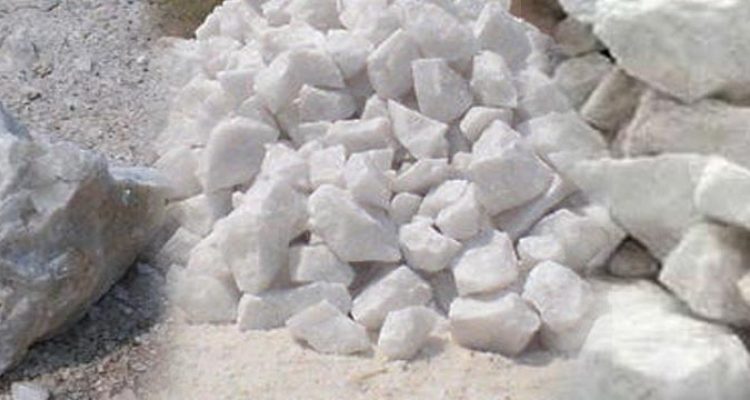FELDSPAR
Chemically, the feldspars are silicates of aluminium, containing sodium, potassium, iron, calcium, or barium or combinations of these elements. Feldspars are primarily used in industrial applications for their alumina and alkali content. The term feldspar encompasses a whole range of materials. Most of the products we use on a daily basis are made with feldspar: glass for drinking, glass for protection, fiberglass for insulation, the floor tiles and shower basins in our bathrooms, and the tableware from which we eat.
Industrial Applications of
feldspar
- Glass: Feldspar is an important ingredient in the manufacture of glass and an important raw material as well, because it acts as a fluxing agent, reducing the melting temperature of quartz and helping to control the viscosity of glass. The alkali content in feldspar acts as flux, lowering the glass batch melting temperature and thus reducing production costs.
- Ceramics: In the manufacture of ceramics, feldspar is the second most important ingredient after clay. Feldspar does not have a strict melting point, since it melts gradually over a range of temperatures. This greatly facilitates the melting of quartz and clays and, through appropriate mixing, allows modulations of this important step of ceramic making. Feldspars are used as fluxing agents to form a glassy phase at low temperatures and as a source of alkalies and alumina in glazes. They improve the strength, toughness, and durability of the ceramic body, and cement the crystalline phase of other ingredients, softening, melting and wetting other batch constituents.
- Fillers: Feldspars also are used as fillers and extenders in applications such as paints, plastics and rubber. Beneficial properties of feldspars include good dispersability, high chemical inertness, stable pH, high resistance to abrasion, low viscosity at high filler loading, interesting refractive index and resistance to frosting. The products used in such applications are generally fine-milled grades.
- Enamel frits and glazes: Feldspar assists the enamel composition, assuring the absence of defects and the neatness of the end product: e.g. enamel frits, ceramic glazes, ceramic tile glazes, sanitaryware, tableware, electrical porcelain and giftware.
- And many other end-uses: paint, mild abrasives, urethane, welding electrodes (production of steel), latex foam, the welding of rod coating, and road aggregate.
- In the flooring sector, feldspar is the main constituent in the body composition. It is used as a flux, lowering the vitrifying temperature of a ceramic body during firing and forming a glassy phase. Surface tension pull the remaining solid particles together, giving a densification of the ceramic body. With rising temperatures the alkalis become more active and first dissolve the clay particles and then the free silica.
- In tableware, feldspar gives a good fusibility for a product without defects.
- In sanitaryware, the use of feldspar within vitreous ceramic bodies is used to facilitate the optimization process.

